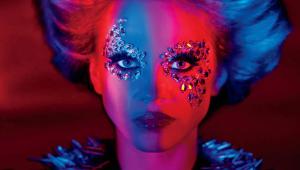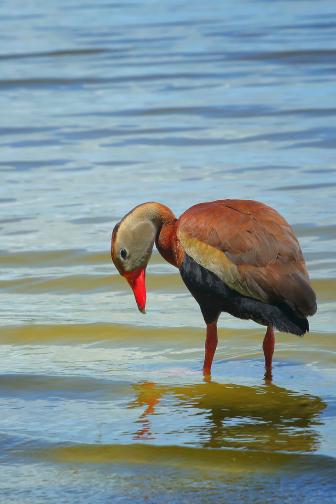The Bird Photography Field Guide
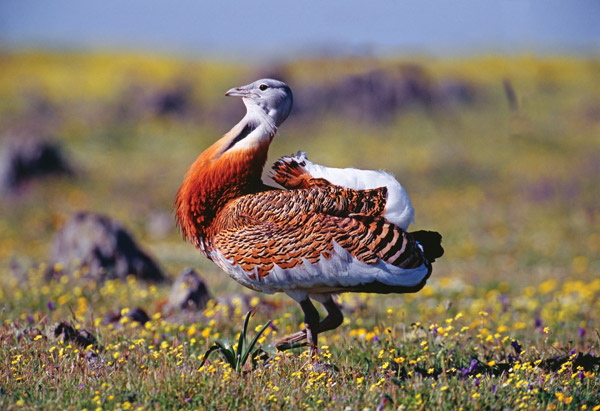
500mm lens; ISO 100; 1⁄500 sec at f/8
All Photos © David Tipling
Unlike studio or still life photography, when photographing birds you have to work with the light available to you and your subject. That said, there are a number of methods that will gain you a measure of lighting control.
The quality and direction of light falling on a bird will have a dramatic impact on the mood created in the image. The best light of the day generally occurs in the couple of hours after the sun rises or before the sun sets, as the golden glow of the sun low in the sky helps to enrich colors. However, on bright, overcast, or cloudy days, I have no qualms about taking pictures throughout the course of the day. Even on bright, sunny days, if a good opportunity for an image arises, I take it.
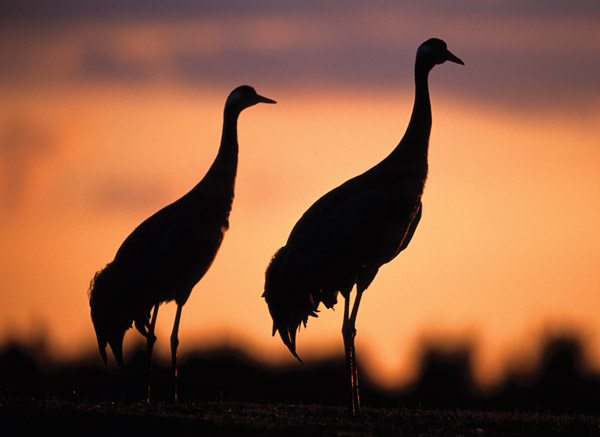
500mm lens; ISO 100; 1⁄250 sec at f/4
Although midday light can be harsh, this is not a reason to pack the camera away. Fill-in flash can help soften harsh shadows, and Photoshop can be used to easily create catchlights in eyes when post-processing. Having said all this, as soon as my shadow becomes shorter than me when the sun is shining, I do ease off a little until the light improves later in the day.
There is always a temptation to shoot nicely front-lit bird images: colors are always rendered well, there are few shadows created, and many pleasing images are created in this way. For shots like this, you need to ensure the sun is shining from over your shoulder. However, I would urge you to experiment with the direction of light, since more eye-catching images can be made by bucking the trend. While front-lit images are two-dimensional in appearance, you can create more perceived depth in an image when there is a three-dimensional look. To achieve this, you have to use the direction of the light to create contrast with shadow.

500mm lens; ISO 100; 1⁄250 sec at f/5.6
The other lighting options are side lighting and backlighting. Side-lit images can look dramatic, elevating a pleasing portrait to something more striking. Side lighting works best when the sun is low—this kind of shot is not so effective in the middle of the day—and I also find that shooting low helps. You should ensure that the lit side of the bird is correctly exposed, because if any areas are burned out the effect is lost; by exposing for the lit side, the shadows will take care of themselves. Side lighting can give a three-dimensional look to an image that is particularly effective with large birds.
Backlighting can be dramatic, too; the mood of a picture shot from the front can be completely altered by shooting in the opposite direction, but watch out for lens flare caused by internal reflections from lens elements. Chipped or scratched glass or dirt on the lens can also cause problems; to avoid this use a deep lens hood, or try shading the top of the lens with your hand. When using backlight you can achieve a wonderful rim-lighting effect if your subject is against a dark background—the outline of the bird becomes lit up, as if wearing a halo.

500mm lens; ISO 100; 1⁄250 sec at f/16
Silhouettes can be produced through strong backlighting, aligning your bird in line with the setting or rising sun, or at least against a bright, colorful sky. Bird silhouettes work best when the outline is easily recognizable. Examples might be a cormorant drying its wings, a crane silhouetted in flight, or perhaps an eagle.
Good silhouette shots are rarely unexpected; they take a bit of planning and knowledge of favored perches or flight opportunities. It is then a matter of waiting for the right conditions and hoping the bird cooperates by using the chosen perch.
To what degree you silhouette your subject is personal choice, often any exposure to within two or three stops will work, the variance being the intensity of the colors in the sky. You can control this in Photoshop and, if shooting in Raw, in the camera’s Raw converter. I tend to expose for an area of sky that is close to the sun but does not contain the brightest part and then use this as a base reading. You can experiment, but remember that when your histogram has the silhouetted bird in the frame, it will show tall spikes on the left-hand end, indicating clogged or almost clogged blacks. Don’t worry about this; the aim is to achieve the shape of the bird rather than showing any plumage detail.
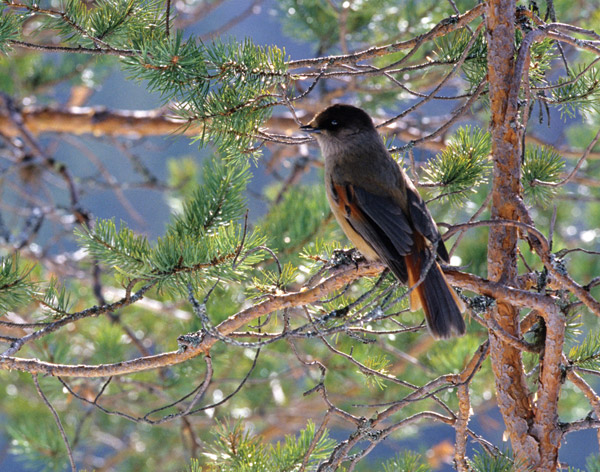
300mm lens; ISO 100; 1⁄250 sec at f/8
To achieve effective silhouettes, you ideally need to be in fairly open habitats—the flatter the better—as the best results will be shot close to sunrise or sunset. Stretches of water, deserts, estuaries, and marshes all make great locations, and water birds are a favorite subject for these type of images. Flocks of birds can be effective—there are really plenty of options.
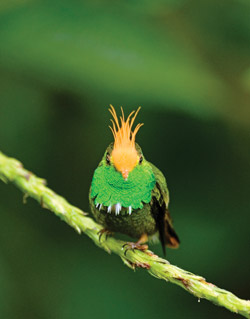
Pro Tip
When photographing birds with iridescent feathers (above), you want to be able to bring out these colors. Watch a hummingbird, and you will see flashes of color, depending on how the light hits the bird’s plumage. Normally, to capture these colors on film, you need to be straight on to the bird as it faces you. Using a flash can help. This stunning picture of a male rufous-crested Coquette hummingbird was photographed in Panama, and for the most part showed a black throat and breast. Only when it turned toward me did I see this beautiful emerald green display. I used fill flash to help in showing this off.

The Bird Photography Field Guide by David Tipling (Focal Press, May 2011, ISBN: 978-0-24081-776-7, $15.95, 200 pages) may be purchased online at Amazon.com, BN.com, Borders.com, and Elsevier.com. It is also featured on the Focal Press web page: www.focalpress.com/books/photography.
Author’s Bio
David Tipling is one of the world’s top wildlife photographers. He has earned many awards for his distinctive imagery, including International Wildlife Photographer of the Year 2003 and European Nature Photographer of the Year 2001 for his documentary coverage of Emperor Penguins. Birds Illustrated magazine has described David as being in the vanguard of wildlife photographers in gaining acceptance of bird images as art.









